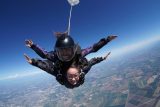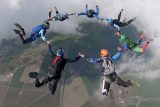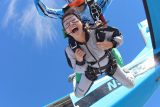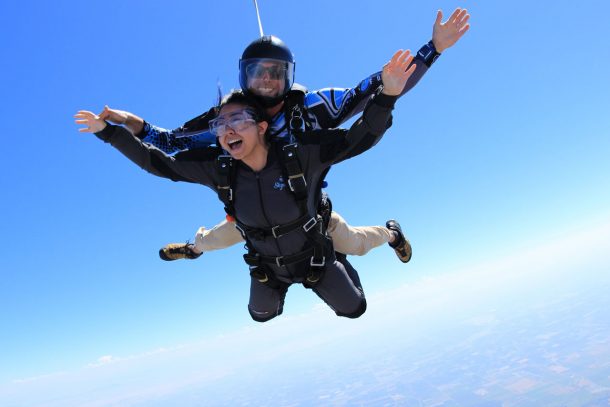Do skydivers have a backup parachute?
We get this question all the time, ‘do skydivers have a backup parachute’, and the answer is—yes! Skydivers—tandems included—jump with two parachutes, a main and a backup parachute, which in the industry, we call a reserve parachute.
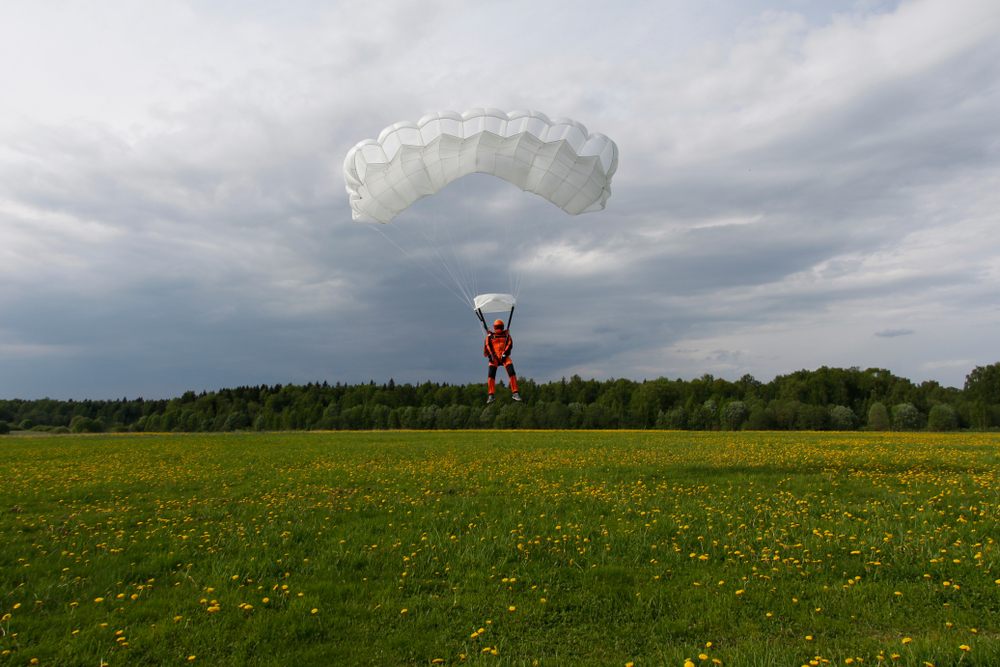
Reserve Parachute Vs a Main Parachute
The main parachute is typically a 9 cell RAM air canopy (parachute). The design of the canopy is geared toward performance—think of the main canopy and a sport parachute as being a lot like a zippy sports car. The parachute is deployed by a pilot chute. This pilot chute is attached by a length of fabric webbing called a bridle. Half-way up the bridle is a pin holding the main parachute container closed. As the pilot chute inflates it tugs on the pin and the main parachute container opens.
Here’s a video of a skydive main parachute opening:
What is a Reserve Parachute?
The reserve parachute is a 7 cell RAM air canopy. The design of the reserve canopy is geared towards reliability—the reserve is a lot like a top safety rated minivan. When the time arises, the reserve canopy may be activated by the appropriate enactment of Emergency Procedures, by the enactment of Emergency Procedures and a Reserve Static Line, or by the Automatic Activation Device. Emergency Procedures are a series of actions utilized by jumpers to solve problems that may arise during a skydive and the deployment of a canopy. The reserve static line is a piece of equipment that is attached to the main parachute’s risers to activate the reserve parachute if the main parachute is jettisoned during an emergency. The Automatic Activation Device or (AAD) is a fancy piece of gadgetry we will go into a bit later, but first, let’s take a closer look at the reserve canopy.
The reserve parachute can only be packed by a parachute rigger who has been certificated and appropriately rated by the Federal Aviation Administration. The gear that is being used in skydiving must have received approval in the form of Technical Standard Orders. These TSO’s are only issued to parachutes that comply with current performance standards. The parachute rigger has received specialty training in order to gain certification and ratings from the Federal Aviation Administration. Reserve parachutes must be inspected and re-packed every 180 days.
What is an AAD (Automatic Activation Device)?
The Automatic Activation Device or AAD is a tiny uber-precise computer that calculates the rate of descent and altitude and activates the reserve canopy at a preset altitude. For further peace of mind, the Automatic Activation Device that is used with tandem skydives has been specifically designed with a higher activation altitude. The result is additional safety for the tandem passenger and the pilot.
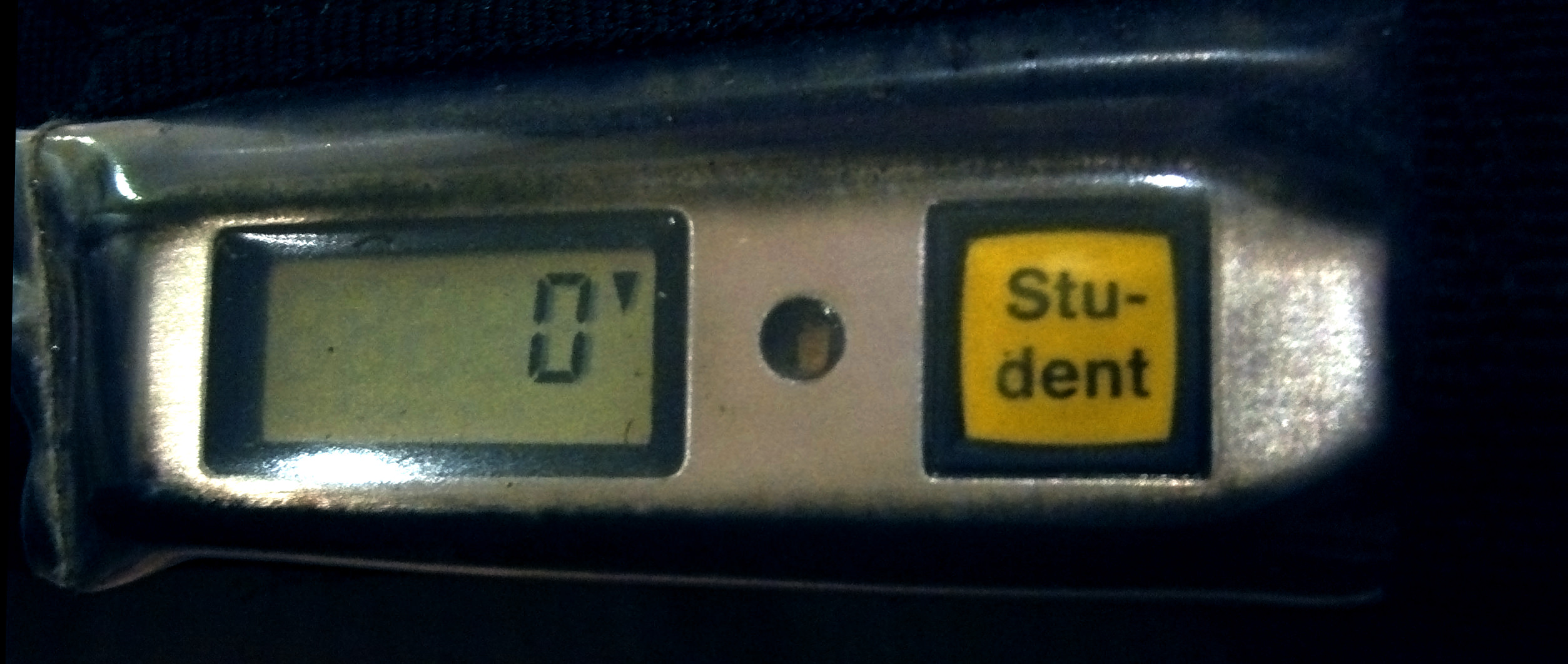
Now, even with all this fancy technology, skydivers are well trained to handle emergencies, if they arise. To receive a skydiving license, a jumper will have had to repeatedly demonstrate correct emergency procedures, and tandem instructors certainly know their way around emergency procedures. They are required to test and demonstrate appropriate emergency procedures even more rigorously. Additionally, in order to receive their tandem rating, s/he will have had to have a cutaway (an instance where they jettisoned their main parachute) under a sport canopy.
We know that was a lot to digest! Though, after reading this piece, consider yourself fairly well informed because you’ve just learned a bit about the technical side of skydiving.
Hopefully, we’ve put your mind at ease and would love to take you on your first skydive at Skydive California!
